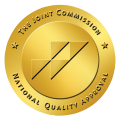The risks to both physical and mental health associated with drug use and substance abuse extend beyond the period of active use. Even after quitting, individuals may experience distressing symptoms and health hazards. This collection of side effects that arise following a significant reduction or discontinuation of substance use is commonly known as withdrawal.
It’s important to note that this potential discomfort should not discourage individuals from seeking help for addiction. But to ensure safety during the detoxification process, it is crucial to find the appropriate level of support.
Our center for addiction treatment in the Woodlands, Texas offers withdrawal management for people suffering from mild to severe symptoms that come as a result of substance abuse. We’re dedicated to helping people through the withdrawal process in a way that sets them up for success in the recovery process.
Detox alone doesn’t lead to long-term abstinence from drugs and alcohol. A treatment program that includes individual therapy can be essential to developing long-term recovery, and medical support during transition can help sustain sobriety in the early stages of recovery.
Which Drugs Require Withdrawal Management?
Symptoms and their severity greatly depend on the drug. Some drug addictions are more prone than others to necessitate medication-assisted treatment. When multiple substances are involved, withdrawal management is more complicated.
When a person develops a physical alcohol dependence, their body requires the substance to function properly. As a result, withdrawal symptoms will typically begin within 6 to 24 hours after the last instance of alcohol consumption. The acute withdrawal symptoms associated with alcohol can persist for up to 10 days and can encompass the following:
- Feelings of anxiety
- Excessive sweating
- Tremors or shakiness
- Dehydration due to vomiting and diarrhea
- Elevated blood pressure and heart rate
- Difficulties with sleep
- Seizures
- Hallucinations and delusions
The most uncomfortable alcohol withdrawal symptoms tend to emerge between 36 and 72 hours after the last drink. In some cases of heavy consumption, withdrawal management patients may experience extreme symptoms called delirium tremens (also known as “DTs”). This emphasizes the importance of safe and healthy detox before entering intensive treatment programs such as inpatient rehab.
Withdrawal symptoms benzodiazepines are strikingly similar to those of alcohol withdrawal. Symptoms of withdrawal from benzo addiction include:
- Anxiety and depression
- Hand tremors
- Anger, agitation, and irritability
- Nausea and vomiting
- Insomnia and sleep problems
- Hallucinations
- Seizures
Short-acting sedative withdrawal symptoms (oxazepam, alprazolam, and temazepam) typically begin one to two days after the last dose and can last for four weeks. Long-acting withdrawal symptoms (such as for diazepam and nitrazepam) typically begin up to seven days after the last dose and can last for about eight weeks.
Opioids include both prescription narcotics such as OxyContin, Percocet, fentanyl, morphine, and codeine as well as drugs like intravenous heroin. The type of opioid and the amount taken (along with personal health risk factors) will dictate the estimated duration of withdrawal symptoms and the severity.
Quitting a short-acting opioid can cause withdrawal symptoms that appear within hours after the last use and may resolve by day 10. But withdrawal symptoms linked with longer-acting opioids, such as methadone, may appear two days after the last use and may continue up to 20 days. This is highly dependent on the opioids and the personal health of the person undergoing detox.
It’s highly recommended that opioid withdrawal be managed with medically-assisted detox, to control the difficult emotional and physical side effects of withdrawal. Symptoms may include:
- Mood swings
- Depression
- Anxiety
- Restlessness
- Insomnia and trouble sleeping
- Runny nose and teary eyes
- Aching muscles
- Nausea, vomiting, and diarrhea
- Chills, sweating, and fever
- Bowl problems, such as constipation
- Agitation
- Irritability
Opioid withdrawal is not considered life-threatening in the same way that alcohol and sedative withdrawal are; nonetheless, vomiting and diarrhea can cause major medical consequences such as dehydration and electrolyte imbalance. Individuals with pre-existing cardiac issues may potentially experience medical difficulties during withdrawal as a result of withdrawal symptoms such as elevated blood pressure and heart rate.
Prescription drugs cause withdrawal symptoms severe enough to merit medical detoxification due to the symptoms it causes, according to the Substance Abuse and Mental Health Services Administration (SAMHSA).
Stimulants affect the chemistry of the brain and can lead to serious addiction when taken in high quantities or for an extended length of time. Following the cessation of stimulant use, the brain undergoes a readjustment phase characterized by physical and psychological withdrawal symptoms. The severity is dependent on the dosage and duration of usage.
Symptoms usually appear within hours of the last usage, but might take up to a day to appear. Post-acute withdrawal effects like mood swings, insomnia, and sadness can linger for weeks or months. In certain situations, stimulant withdrawal can result in the following:
- Anxiety
- Depression
- Paranoia
- Delusions
- Hallucinations
- Aggression
- Fatigue and body aches
- Insomnia
- Irritability
- Poor concentration
- Mood swings
The psychological symptoms of stimulant withdrawal can be very severe and can lead to relapse, aggressive conduct, or suicidal thoughts. The sorts of symptoms seen during stimulant withdrawal differ from person to person and are highly influenced by the individual’s history of use.
Levels of Care: Detox
The safest way to detox is in a medical setting while being supervised by medical professionals. Medications are often used to manage withdrawal symptoms which vary depending on the substance and the severity of the addiction. Withdrawal symptoms can range from mild discomfort to severe and even life-threatening complications.
Detox is the first level of care for substance abuse treatment because it lays the foundation for the rest of the recovery journey. It allows patients to physically and mentally prepare for the next level of substance abuse treatment.
A person can not proceed with other forms of treatment without first detoxing because withdrawal symptoms make it difficult to focus on recovery. Furthermore, detox helps break the physical dependence on drugs or alcohol, which is crucial for long-term recovery.
Medications Used in Detox
Medications are often used to manage withdrawal symptoms and to keep patients comfortable during detox. Some of the medications that are commonly used in detox include:
- Antidepressants – These medications are used to manage withdrawal symptoms from stimulants such as cocaine and methamphetamines. They work by changing the levels of brain chemicals and can alleviate depression, anxiety, and agitation.
- Methadone – Methadone can help manage withdrawal symptoms from opioids such as prescription painkillers and heroin. It works by binding to the same receptors in the brain as opioids without creating euphoric effects.
- Buprenorphine – Similar to methadone, buprenorphine also manages withdrawal symptoms from opioids. It works by partially activating the same brain receptors as opioids. This helps reduce withdrawal symptoms and cravings.
- Naltrexone – This medication blocks the effects of opioids and is often used in combination with buprenorphine or methadone.
- Benzodiazepines – These medications help manage withdrawal symptoms from alcohol and other sedatives. They work by increasing the activity of the neurotransmitter GABA which helps reduces anxiety and agitation.
Many medications used in detox are highly addictive. For this reason, medications should be closely monitored by a medical professional. Additionally, medications are only part of a comprehensive treatment program and should be used in combination with personalized therapy and other forms of support.
Levels of Care: Stabilization
During stabilization, patients participate in psychotherapy, also known as individual therapy, group therapy, and support groups. The goal of stabilization is to address any underlying mental health conditions, such as anxiety and depression, that may have contributed to the development of substance abuse.
Stabilization helps patients develop coping mechanisms to manage cravings and triggers. Therapy also teaches life skills such as stress management, healthy communication, and self-care. These skills are essential for patients to build and maintain their recovery.
Stabilization serves as a transition period between detox and residential treatment. It allows patients to adapt and acclimate to the recovery process and being sober before moving on to the next level of care for substance abuse treatment. When patients go through stabilization, they are better prepared for the next level of care and increase their chances of long-term recovery.
Levels of Care: Residential Treatment
Patients participate in individual and group therapy and support groups during residential treatment. They also engage in recreational activities and holistic therapies such as yoga and meditation, which benefit overall well-being and lasting recovery.
Residential treatment is an important level of care for substance abuse treatment because it provides patients with a structured environment where they can focus solely on their recovery. The triggers and temptations are removed from their daily lives, which are significant hurdles in early recovery. Patients in residential treatment develop the tools and skills they need to maintain long-term recovery.
Moreover, our inpatient rehab in Houston, Texas provides patients with the highest level of support and structure, which is beneficial for those who have been struggling with addiction for a long time. By living in a community with others in recovery, patients can support each other and learn from others’ experiences. Patients develop a sense of belonging and build a lasting support system that can last beyond residential treatment.
The Importance of Therapy in Addiction Recovery
During individual therapy, patients work one-on-one with a therapist or counselor to identify and address underlying emotional, psychological, and behavioral issues contributing to their addiction. This can include issues such as depression, anxiety, stress, and trauma. By addressing these issues, patients develop a deeper understanding of themselves and build healthy coping skills to make better choices.
Patients also work through their feelings of guilt, shame, or regret associated with their addiction. This helps patients develop a greater sense of self-compassion which is crucial in recovery.
Furthermore, individual therapy can help patients set goals and develop a plan to achieve these goals. This can include identifying triggers, developing coping strategies, and setting realistic expectations for the future. This helps patients establish a sense of direction while motivating and empowering them in their recovery journey.
Why Should I Choose a Continuum of Care Program in The Woodlands?
Our program is perfect for any person at any stage of addiction. At first, you may need a lot of support, but as you progress through treatment, you may require less. Our levels of care program adjust to your needs and offer the best chance at lasting recovery.
The Woodlands has a fantastic team of professionals who are experienced in treating addiction. They provide high-quality care and support in a structured and safe environment, allowing you to focus on your recovery. Contact us today to start building a life of recovery.

















